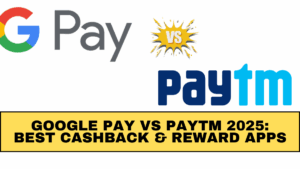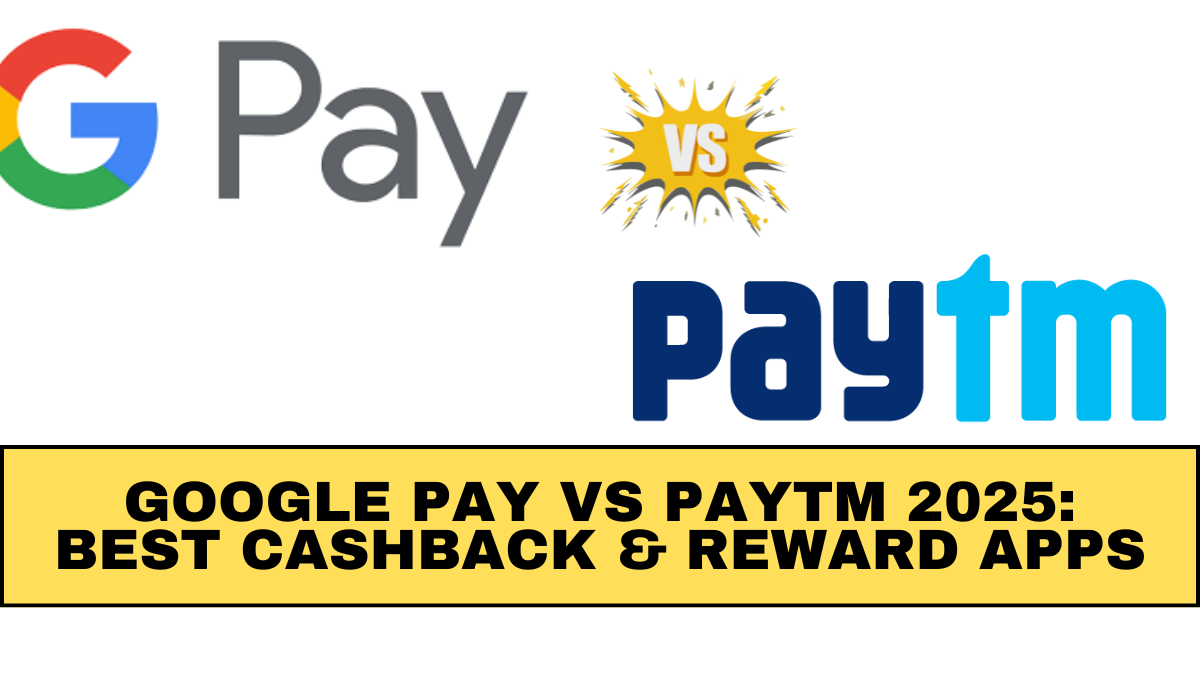Digital payments in India continue to grow rapidly, making apps like Google Pay and Paytm essential tools for everyday transactions. This year, users are comparing the two platforms closely to see which offers better rewards, smoother UPI features, and overall convenience.
As digital adoption rises, the debate around Google Pay vs Paytm 2025 focuses on cashback benefits, loyalty programs, and the speed of UPI transactions. Both platforms remain top choices in the world of digital wallets, but each has its own strengths.

UPI Speed and Reliability Comparison
Both apps offer strong UPI performance, but their user experiences differ slightly. Google Pay is known for fast payments and a clean UI. It focuses heavily on UPI-first features that keep the interface simple and quick.
Paytm, on the other hand, combines UPI with wallet funds, bank transfers, and additional tools. Users who want flexibility beyond UPI often prefer Paytm. This makes the Google Pay vs Paytm 2025 comparison more about usage style than speed alone.
Cashback and Rewards in 2025
Cashback offers continue to attract millions of users. Google Pay provides scratch cards, point-based rewards, and event-based bonuses. While rewards have reduced compared to earlier years, users still enjoy frequent surprises.
Paytm offers structured cashback programs, Paytm First points, and wallet-based rewards. Many users consider Paytm better for regular savings and bill payments. This gives Paytm an edge for those who depend heavily on cashback from digital wallets.
Extra Features and App Functionality
Google Pay keeps its layout minimal, focusing on UPI payment history, QR scanning, and quick transfers. This makes it ideal for users who want a straightforward payment app without distractions.
Paytm offers a much wider ecosystem that includes recharges, insurance, ticket booking, and shopping. This versatility makes it a more complete platform, especially for multitasking users comparing Google Pay vs Paytm 2025.
Security and Fraud Protection
Both apps offer strong security systems backed by multi-layer authentication. Google Pay uses Google’s global security network, ensuring encrypted and protected payments.
Paytm includes device binding, OTP verification, and app lock features that keep wallets and UPI accounts secure. Many users trust Paytm’s additional wallet protection measures, especially those new to digital wallets.
Which App Offers Better Value in 2025?
Choosing between Google Pay and Paytm depends on what users need most. For fast transfers and simple UPI payments, Google Pay remains a top choice. For cashback lovers and people who prefer a feature-rich ecosystem, Paytm offers more value.
Both apps continue to expand UPI features, making Google Pay vs Paytm 2025 one of the most discussed comparisons in India’s digital finance space.
Conclusion
The Google Pay vs Paytm 2025 comparison shows that both apps serve different needs but remain equally powerful in India’s digital payment industry. Google Pay excels in simplicity and fast UPI transfers, while Paytm stands out with cashback options, wallet features, and added services.
As more users adopt digital wallets and rely heavily on UPI, both apps will continue improving rewards, security, and ease of use. Ultimately, the best app depends on the individual user’s priorities.
FAQs
Which app offers better cashback in 2025?
Paytm generally offers more consistent cashback programs, while Google Pay provides occasional scratch cards and rewards.
Is Google Pay faster for UPI payments?
Yes, Google Pay is known for quick and smooth UPI transfers thanks to its simple interface.
Does Paytm still offer wallet payments?
Yes, Paytm Wallet remains active and is useful for quick transactions and additional cashback features.
Which app is safer to use?
Both apps offer strong security. Google Pay uses Google’s global security system, while Paytm adds extra wallet protection features.
Which is better for daily payments?
Google Pay works best for simple UPI payments, while Paytm is ideal for users who want UPI plus multiple added services.
